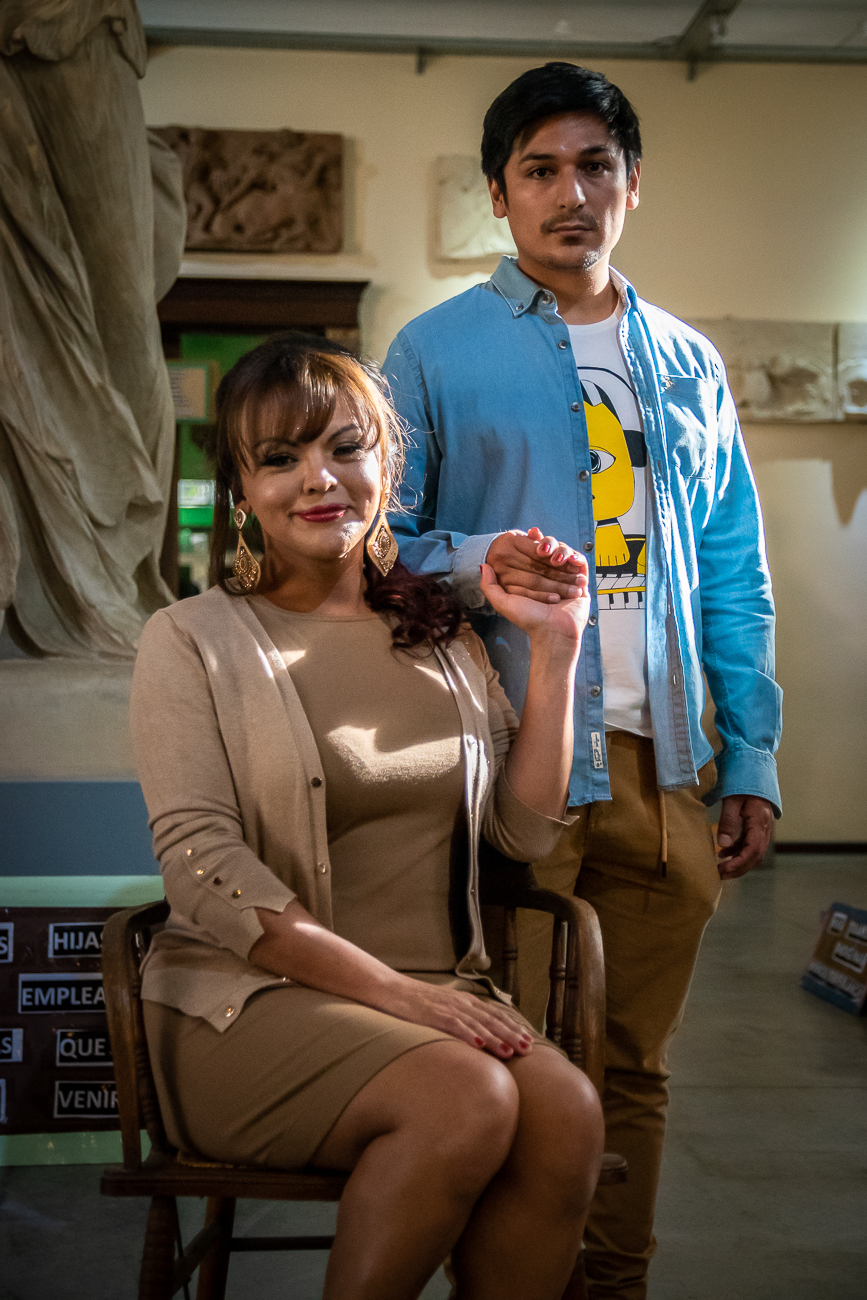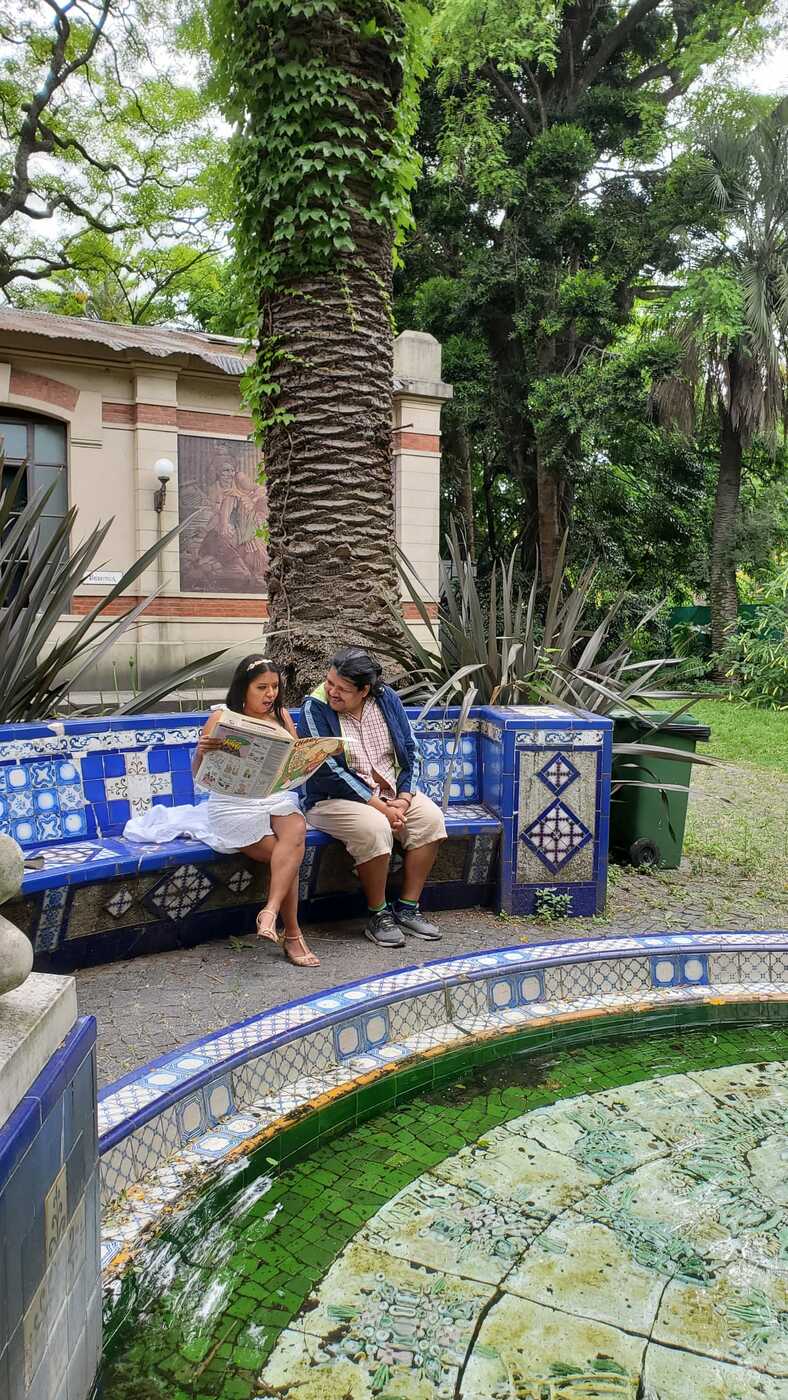Identidad Marrón: Actors, Scripts and Cameras
Daniela Ruiz, Rebe López, David Angel Gudiño, and Alejandro Mamani; edited by Ana Vivaldi and Pablo Cossio
Euge Choque, by David Angel Gudiño
What kind of invitations do our families, fathers, mothers, grandfathers, and grandmothers receive from museums? What do museums in Latin America commemorate and what is the relationship with our corporalities and our ancestry? The person who observes the performances in the museum represents the Marrón bodies that dare to enter a space that seems not designed to receive them and that systematically rejected non-white people in the past. Crossing the glass doors is a political act. The youthful look of the actor establishes an intergenerational conversation because of those who were not allowed in before her.
Euge Choque is an interdisciplinary artist who works in the performing and visual arts. A graduate in Dramatic Arts (UNA), she also trained as a Graphic Designer with a specialization in website design at the National Technological University (UTN) and at the DaVinci School of Multimedia Arts.
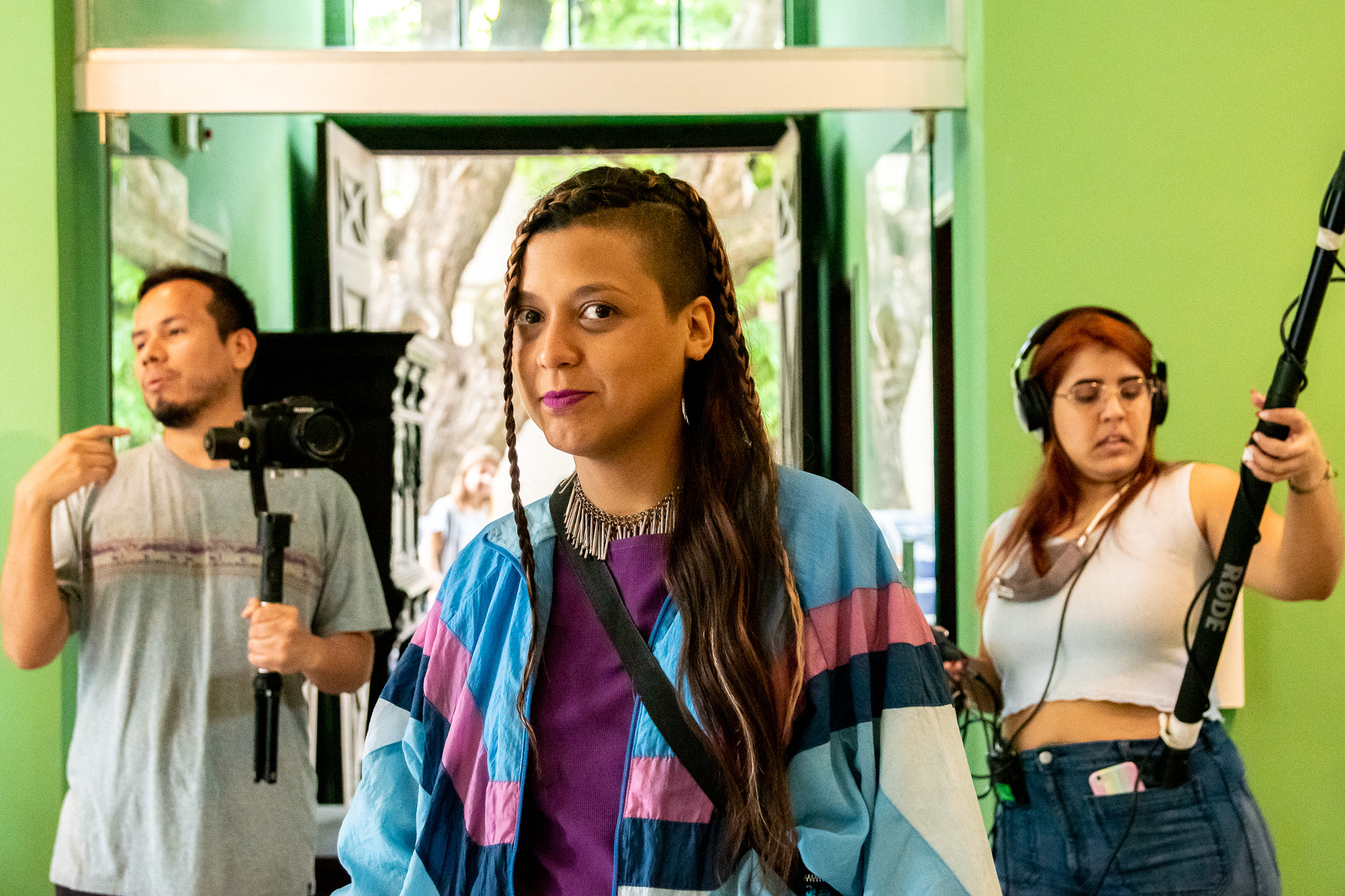
Daniela Ruiz, the Unwanted Queen, by Herself
My name is Daniela Ruiz. I am an actor, the director of the company 7 Colours Diversity, and I also collaborate with the Identidad Marrón group. We presented La reina no querida to criticise structural racism. This performance was about class aspirations and what is achievable and what is not. Can a Marrón/Indigenous person be in political office? Can a Marrón/Indigenous person be president of the nation? Can an Indigenous person have money and think there are no barriers in our society?
Being a racialised Indigenous transvestite from Salta, it seemed very important to me to emphasise this structural racism. How has this been and how is it still being taken today by people who are allowed in certain social classes and not in others? That is why we put together this performance. The text that I perform was entirely created for this space and to be performed within Chisels of Otherness.
David Angel Gudiño, A Marrón Self-Portrait
There is always a base or a starting point for things. In my monologue, Marrón, I reflect on my childhood, profession, and justice claims. From this text others emerged: Mi cuerpo Marrón (My Marrón Body), El David Marrón (The Marrón David) and Un Marrón en el Cervantes (A Marrón Person in the National Theatre). They constitute a collection of texts, photographs and performances called Marrón Series that seek to debate racism in Argentina.
In June 2020, while browsing social media, I came across a post by @identidadmarrón. It showed the faces of brown people killed by the police. When I saw them, I realized that I was just like them. I remember thinking “I am the same” and along with that I remembered when the police stopped me in the middle of Buenos Aires on a weekday around noon. Two plainclothes officers approached me and showed me supposed credentials that I didn’t see because they did it so quickly. They searched my backpack, took out all my things, asked me if the computer I had was mine, asked me what I was doing in the city, why I was there. I told them I was studying at the university and they asked me what subject and I lied. I didn’t dare tell them that I was studying acting, so I said that I was studying security and hygiene.
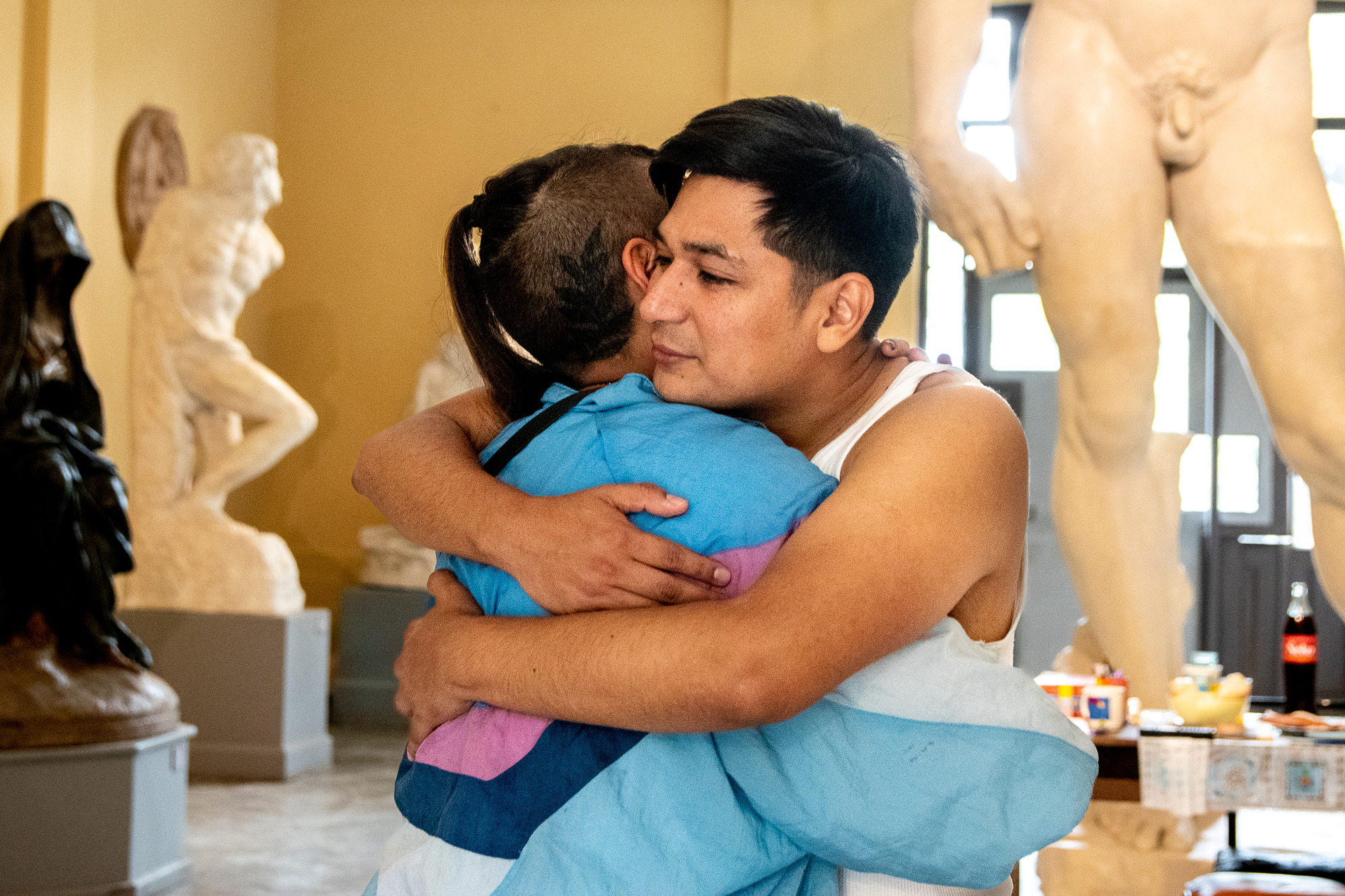
A couple of weeks ago, Lucas González was murdered. Three policemen in a van chased the car that Lucas was in with his friends. They shot at the car and Lucas was hit twice in the head. He was returning home after soccer practice. What would have happened if I had been scared and run away when the police stopped me? What would have happened if I hadn't agreed to show them my things? What would have happened if they didn't believe me that the computer was mine? The fear of the police is constant when you are Marrón. So I think, now I think: "I'm alive by pure chance." Being Marrón in the city of Buenos Aires is being in danger and that's where racism lies.
Marrón is a text that puts questions to the Marrón people killed by the police. I ask them for answers that come from the world where they are. I ask them to explain to me why this happens, why this happens to us. Marrón is thus a call to those who continue to think that racism does not exist in Argentina.
Rebe López, Racismo en español by Alejandro Mamani
Rebe is not only an actor and writer: she is also one of the most viral images in Spanish-speaking anti-racism. Her defiant face and her iconic shirt that states #CallateBlanca (#ShutUpWhitey) make performative reading a living work of art. She links herself to the imitation sculptures with the faces of her ancestors in a temporal dance in which her face is distributed as thousands of copies in bits, whose objective is to leave a message of survival and battle.
Link to Racismo en español by Rebe López and Alejandro Mamani
Link to ¡Todes somos antirracistas! (We Are All Anti-Racists) by Rebe López
Marrón Cameras
The performances were filmed by Dennis Guerrero and Libertad Subero and photographed by Adehmar Miranda - all members of the IM collective. This was not accidental. The cameras were guided by Marrón people gazing at Marrón bodies and this was a way to assert our right to self-representation. The Marrón cameras challenge the intrusiveness of the white, middle-class camera, guided by an exoticising gaze that objectifies and appropriates non-white bodies, drawing on marrón vitality for its own political and aesthetic projects. Cameras and images were conceived as companions on the actors' journey.
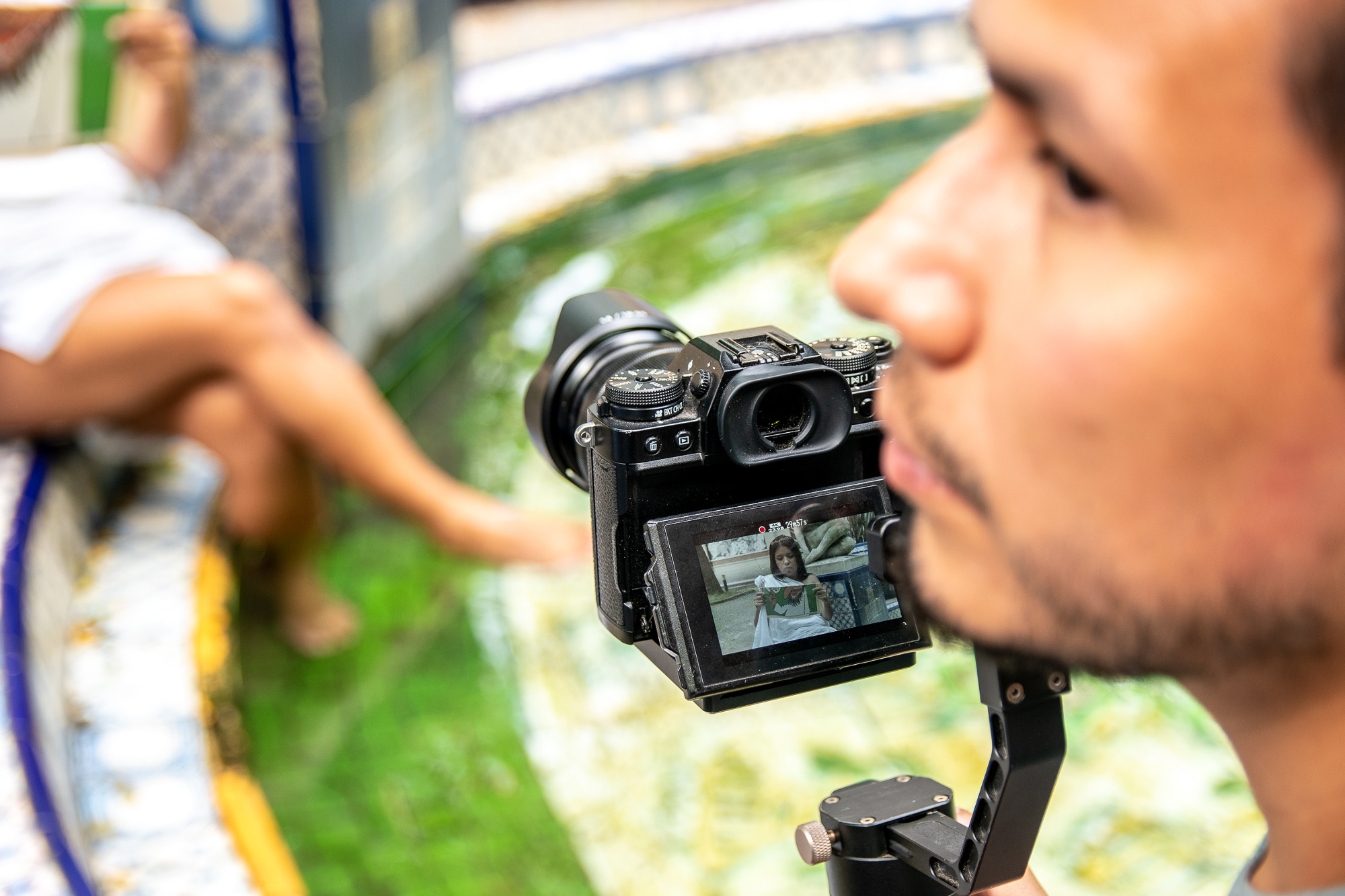
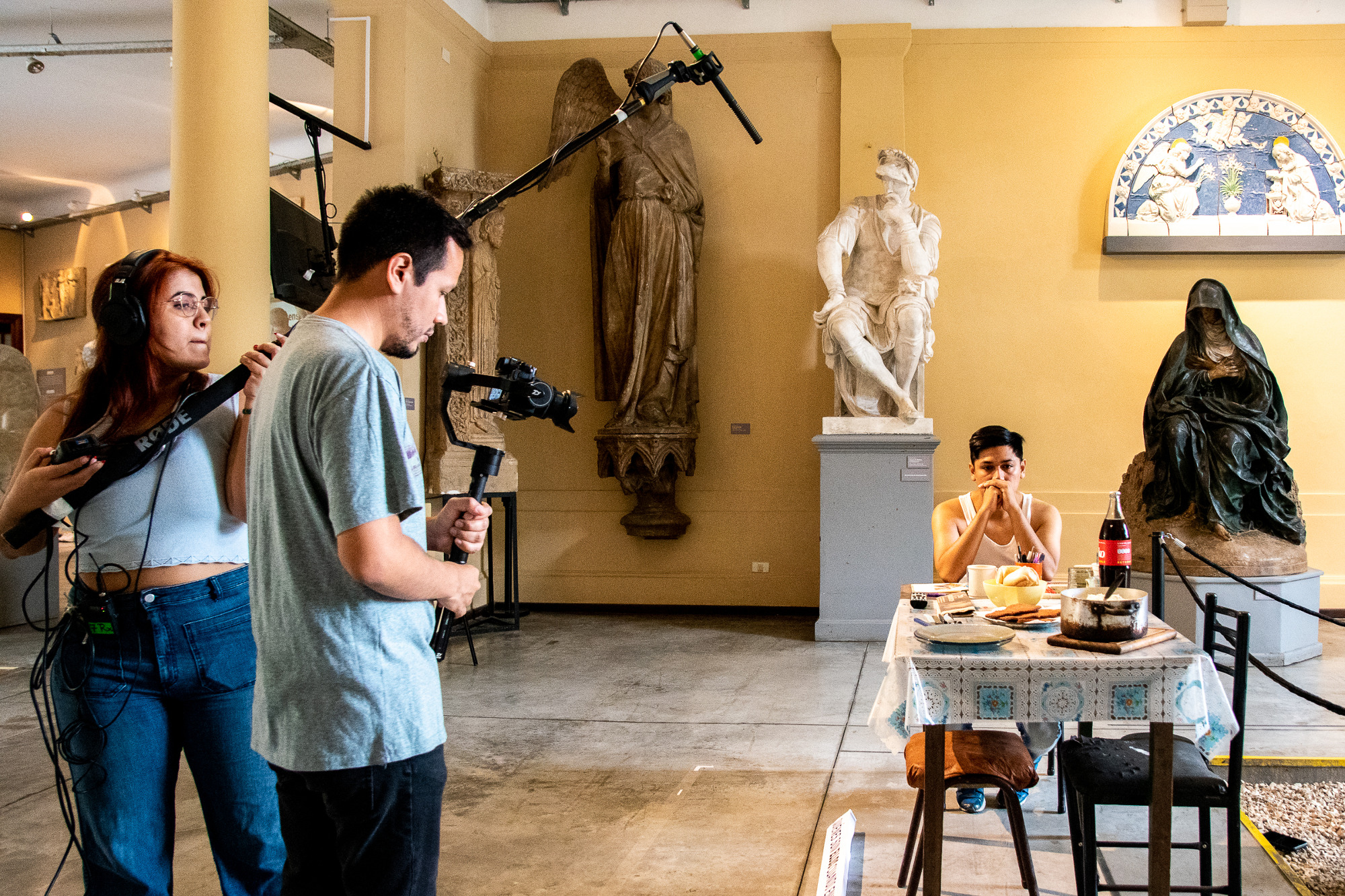
The camera was part of the choreography performed by the actors in their journey through the museum. The camera is thus a support and an affirmation of Marrón people as beauty that comes near, is reflected and is enhanced in each performance that has been constructed with a critical perspective on heritage.

